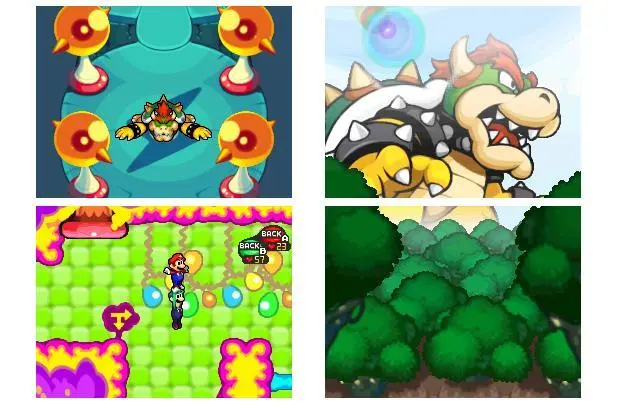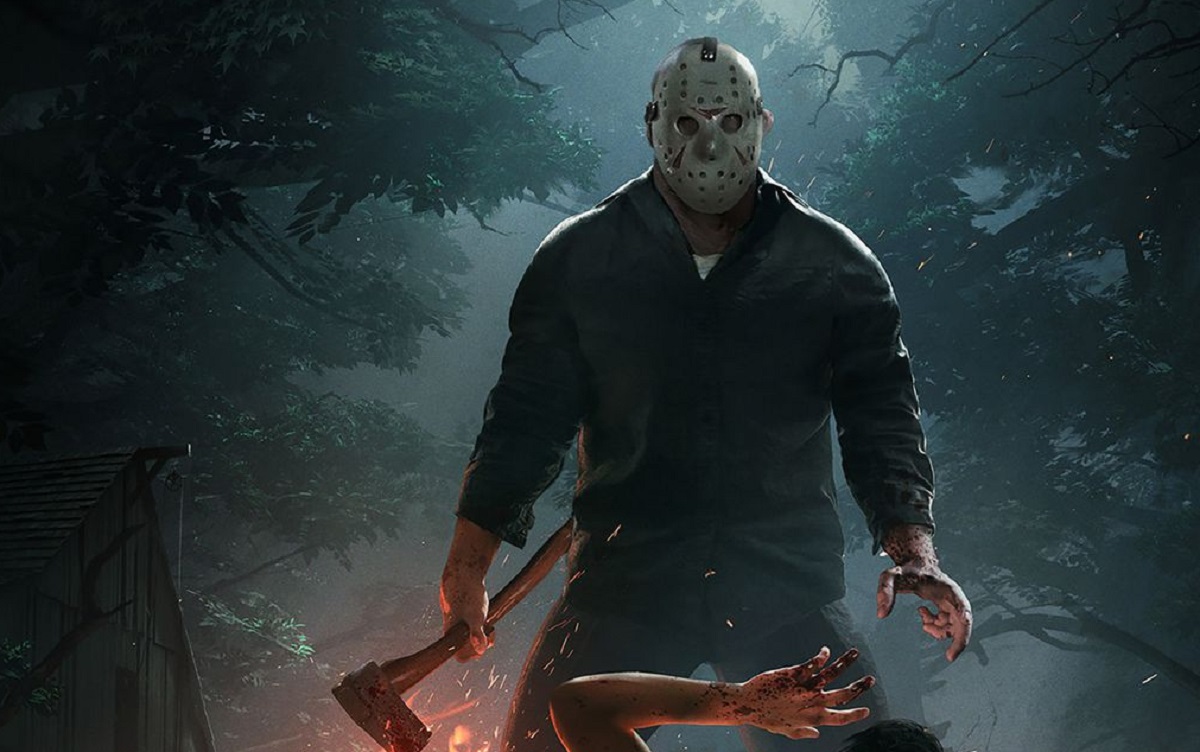I know it may be too early to say this (I still have a ton of games left to play today), but I think I have found my favorite game on the E3 show floor. What is this game, you ask? Well, I will give you a hint: it rhymes with Bario Band Buigi: Kowsers’s Kinside Kory … oh, and it is also written right above the header image and after the “E3 09: Hands-on with” part.
Got it? That’s right, it’s Mario & Luigi: Bowser’s Inside Story for the Nintendo DS. I knew I would love this third installment of the Mario & Luigi RPG series since I adore the other games so much, but I had no idea I would be this impressed with the stuff I got to play.
Hit the jump for an optimism explosion!
For those not familiar with the series, the Mario & Luigi RPGs are a spin-off of sorts of Super Mario RPG: The Legend of the Seven Stars and the Paper Mario series. Well, I guess, in a way, they are more of a hybrid of the two. The first game in the series was the stellar Mario & Luigi: Superstar Saga, followed by its not-as-good-but-still-amazing sequel Mario & Luigi: Partners in Time for the Nintendo DS. Both games follow Mario and Luigi, working together in classic RPG and platforming situations.
With this third game, not much has changed in terms of the overall controls, but there are a ridiculous amount of new and creative sequences that Mario, Luigi, and this time Bowser participate in.
The E3 demo had three sections I was able to play, so I will break each of them down to give you an idea of what to expect from Mario & Luigi: Bowser’s Inside Story.

Section #1 – Mario & Luigi
Obviously the entire story of Bowser’s Inside Story is unknown (spoiler: Mario is Fontaine!), but the basics were pretty apparent in the demo. You play as Mario and Luigi (surprise!), who are summoned to the Mushroom Kingdom to help find a cure for a strange disease that is making the Toads grow into huge, balloon-size versions of themselves.
When Bowser is inflicted with a different disease, he unknowingly inhales the entire denizens of the Mushroom Kingdom (including Mario and Luigi). A majority of the game finds Mario and Luigi, literally, inside of Bowser, trying to find a way out and put an end to what (or who!) is the cause of the mysterious illness.
The first section of the demo starred Mario and Luigi. Just like in Partners in Time, Mario and Luigi are controlled at the same time, but each one can jump by pushing A (Mario) and B (Luigi). In battles (which are turn-based), Mario and Luigi are again controlled with A and B, respectively, and, just like the other games in the series, the brilliance of these battles lies in the special moves.
Mario and Luigi each have special moves that are utilized with specific button timing and, sometimes, with the stylus. For example, if an enemy is attacking Mario, he will always be able to either dodge the attack by jumping at the right time, or deflect the attack by swinging his hammer — same with Luigi. But it’s not as easy as it looks. Each enemy in the game has multiple attack patterns that are sometimes very hard to figure out and time. This adds a lot to the strategy and makes each battle so much more interactive than most other RPGs on the market.

While Partners in Time had the baby versions of Mario and Luigi as its gimmick, Bowser’s Inside Story uses the interior of Bowser as its central theme. Not to put down Partners in Time, but, boy, the Bowser feature in Inside Story works so much better.
Basically, all the action with Mario and Luigi takes place on the bottom of the screen, with Bowser, in the game world, doing things on the top screen. What is so cool is how you manipulate Bowser to do things on the top screen using Mario and Luigi on the bottom.
In the demo, Bowser is tasked with trying to pull an island to shore using a rope. When he grabs the rope he doesn’t have enough strength, so Mario and Luigi have to find the muscle in his arm to help stimulate it.
After journeying through the “dungeon” of Bowser’s body — fighting enemies and jumping on platforms along the way — Mario and Luigi eventually make it to the muscle. This is when the game got even more awesome than it already was!
At the muscle, Mario and Luigi figure out how to stimulate the muscle by shooting these colored sparks at it. To do this, players hit A when the spark is in front of Mario and B when it is in front of Luigi. This seemingly simple sequence all of a sudden turns into a challenging mini-game, with Mario and Luigi deflecting the sparks back and forth until the muscle is big enough to allow Bowser to pull the island. It is a super creative sequence and a perfect example of how genius the interaction between top and bottom screen is.

Section #2 – Bowser
The second section let me take control of Bowser. Like with Mario and Luigi, Bowser can fight enemies as well, but he uses the X button instead of A or B. Besides his powerful punches and flame attack, Bowser uses some special moves that were absolutely incredible.
In addition to being able to hide in his shell to avoid attacks from above, Bowser has one special move — of many, none that were shown in the demo — that is so freakin’ cool. Basically, as the game progresses, Bowser will find Goombas throughout the world that are imprisoned in little cages. By breaking them out, they join Bowser’s “army” and are used whenever Bowser uses a specific special move.
This is how it works: during a battle, by choosing this special move, all the Goombas Bowser has collected in his journey start to run into the screen from the left. And they move fast! If you can tap the Goomba with the stylus, it will shoot into the air and store up an attack (by Bowser setting them on fire and having their flaming bodies fly in the sky — so amazing). Once all the Goombas have run out, the ones that were tapped will fall down and land on the enemy, doing massive damage.
Outside of the battles, Bowser is controlled just Mario and Luigi, but instead of jumping he can punch to break things and breathe fire to burn things down. The variety in playing Bowser really breaks up the action and is a ton of fun. It is also impressive how powerful he is compared to Mario and Luigi, with his attacks doing 35-65 points of damage, with the plumber brothers doing about 4-8.

Section #3 – Special Attack Challenge
Okay, this preview is so long. Sorry about that. I will get through this section pretty quick.
The last part of the demo I got to play was the Special Attack Challenge. In this feature — selectable from the main menu — the player can perform all of Mario, Luigi, and Bowser’s special attacks and try to set high scores for the most moves performed. For example, if you select to play the Bowser’s Goomba army special attack, you would tap as many Goombas as you can before missing one.
This is a completely optional mode, but it was a fun extra that helps break up the main game.
As you can tell, I adored Mario & Luigi: Bowser’s Inside Story. If the final game utilizes the top and bottom screen interaction with even half as much creativity as it did in the demo, we are all in for a real treat. Seriously, playing this game was a perfect experience. Bowser’s Inside Story shows off everything that I love in a videogame: it looked great, it is extremely polished, and, best of all, it is endlessly entertaining.
Obviously I can’t recommend it enough.
Based on my hands-on time with the game, I am giving my impressions of Mario & Luigi: Bowser’s Inside Story a 10.0.*
*This is a ridiculous scoring system and has nothing to do with the final game. I just thought it would be fun to score all the games I play this week based on my hands-on time with them all.












Published: Jun 4, 2009 8:45 PM UTC